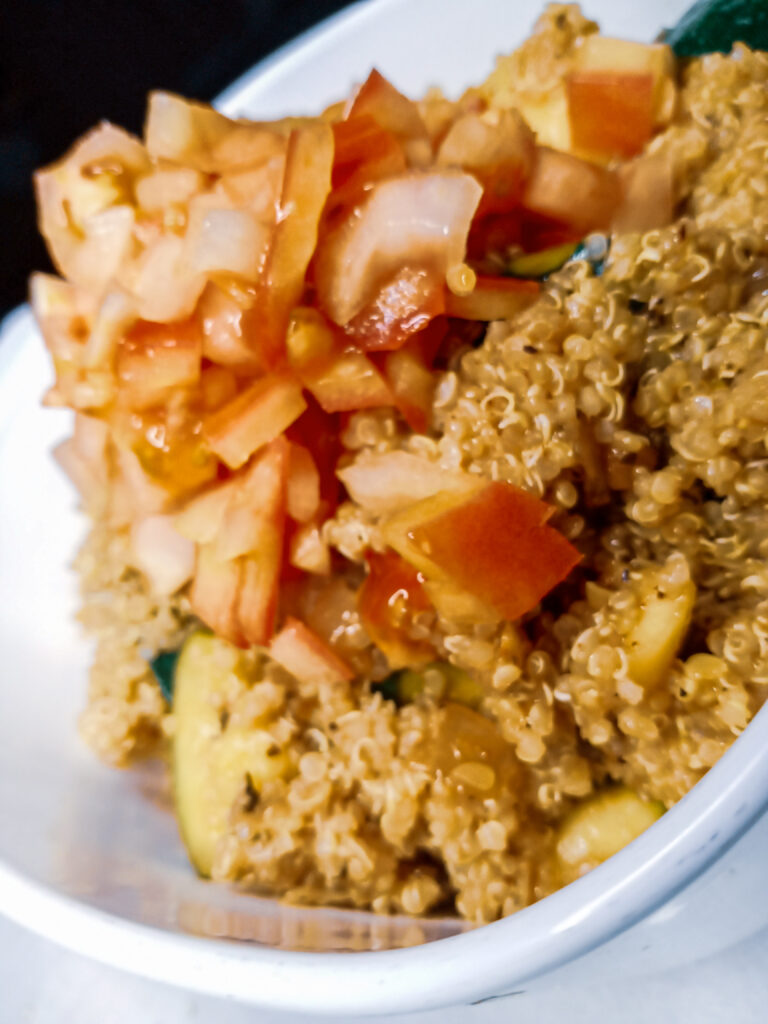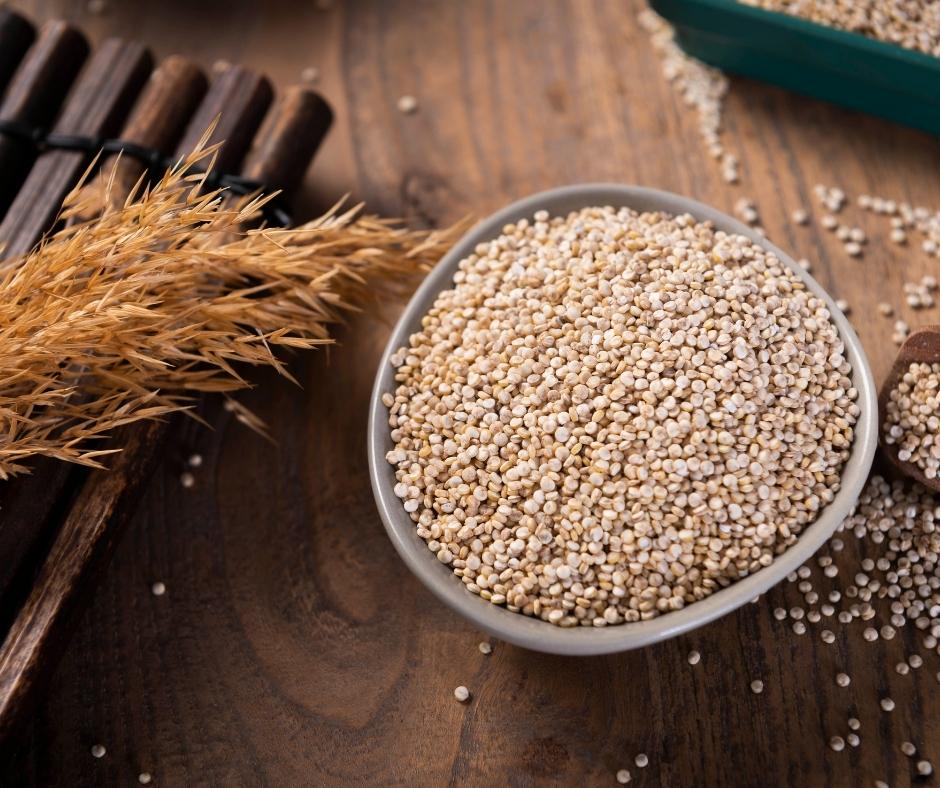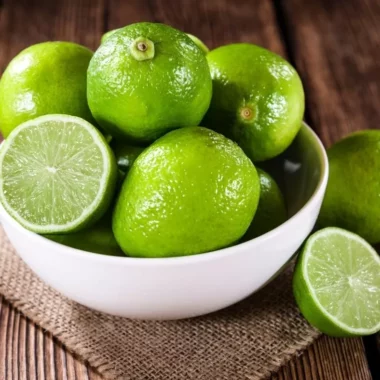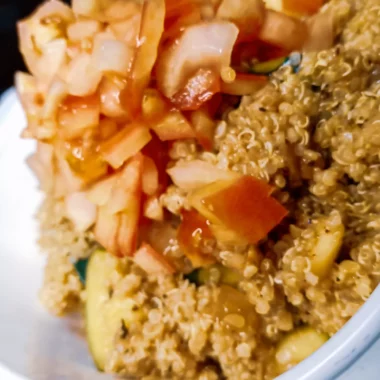Quinoa is a superfood that has a fluffy texture. More importantly, quinoa is known for its ability to keep you satiated. Even though you may hear quinoa referred to as a grain, it is a seed.
Quinoa’s seeds are pale and flat. Typically, they are pale yellow in color, but they can range from pink to black with a bitter or slightly sweet flavor.
Over the last few decades, this ancient pseudocereal has made its comeback. Quinoa’s popularity has soared because it is a gluten-free alternative to traditional grains, and it is easy to cultivate. However, before we get to the health benefits and uses of quinoa, let’s discuss the history of this food.
History Of Quinoa
Quinoa, scientifically known as Chenopodium quinoa Willd., is a member of the Chenopodiaceae species. Quinoa is also a part of the same family as spinach and beet.
The Chenopodiaceae family has about 250 species scattered all over the world. The people of the Andes first domesticated quinoa.
Specifically, Peru and Bolivia cultivated quinoa millennia ago. In fact, the earliest remains of quinoa can be traced back to 5000 BC. Although quinoa was called dahue, suba, jupha, supra, it was called quinua or quinoa in Bolivia, Chile, Argentina, and Peru.
How To Use Quinoa
Quinoa can be used like rice. You can add it to soups, use them to make breakfast cereal, or grind them into flour and make baked goods.
If you grind them into flour, you will be able to use the quinoa flour to make cookies, tortillas, bread, pancakes, and so much more. However, you may want to add a little cocoa powder to your recipe to dilute the quinoa’s robust flavor.
You can also make a vegan roasted vegetable quinoa bowl, quinoa lime zucchini salad, or quinoa stuffed eggplant. Quinoa is an excellent substitute for grains in dishes such as stews, porridge, and pilaf. Quinoa is also an excellent addition to casseroles, salads, or burrito bowls.
Quinoa has a low gelling point, freezes and thaws well, and can be stored at low temperatures. Therefore it can be used to thicken soups or sauces. Quinoa leaves can be used like spinach, while the sprouts can be used to make a salad. Quinoa seeds may also be used to produce beer or used in a South American alcoholic drink used in a religious ritual called chicha. Quinoa can also be used as livestock feed.

How To Cook Quinoa
Quinoa is widely available at health food stores. However, finding quinoa in your local grocery store may take a little work. It may be stocked in the grain or health food aisle.
Although quinoa is not a grain, it’s the honorary cousin of rice, so it’s best to approach cooking quinoa like rice. The general rule for cooking quinoa is to use 2 cups of water for every cup of quinoa.
Quinoa can taste bland when it’s cooked in boiling water. However, this gives you a bigger canvas to add more flavor to the quinoa.
The easiest ways to add flavor to quinoa include cooking it in beef, chicken, or vegetable broth or adding garlic, herbs, or onions to the broth. To intensify its nutty flavor, you can also toast the quinoa before adding the cooking broth. You can also cook different varieties of quinoa, such as black or pink quinoa, since they have more complex flavors than white quinoa.
Health Benefits Of Quinoa
Quinoa is a healthy superfood. Quinoa contains several beneficial nutrients such as protein and fiber, which prevent oxidative stress and decrease the risks of type-2 diabetes, high blood pressure, obesity, cardiovascular disease, and some types of cancer.
Complete Protein
Rarely can you find a plant that contains all of the amino acids necessary to sustain human life. However, quinoa fits the bill.
Quinoa contains all the essential amino acids humans need to survive. In fact, the protein count of quinoa is more than that of corn, rye, sorghum, and barley.
Quinoa’s protein content is closer to that of wheat or casein found in milk. Amino acids are the foundation of proteins and polypeptides. In addition to this, amino acids are needed for development, immunity, reproduction, and maintenance.
Fiber
Most people shy away from quinoa because of its high carb content. However, quinoa is one of the healthiest carbs on the planet.
The primary carb found in quinoa is starch. But it also contains a lot of fiber. One cup of cooked quinoa has 11.9 grams of fiber.
Fiber is popular because of its many health benefits. A higher fiber intake is associated with a decreased risk of developing specific gastrointestinal diseases, diabetes, coronary heart disease, hypertension, obesity, and stroke.
Furthermore, fiber is also associated with reduced blood pressure and serum cholesterol levels. Fiber can even improve glycemia and insulin sensitivity in people with or without diabetes.

Vitamins
Quinoa contains high concentrations of essential micronutrients like vitamins and minerals. Even though research is limited on quinoa’s vitamin profile, quinoa seeds contain large concentrations of pyridoxine and folic acid.
Pyridoxine, or vitamin B6, plays a vital role in the metabolism of amino acids. On the other hand, folic acid or vitamin B9 plays a role in producing red and white blood cells, repairing the skin and intestine lining, and synthesizing chemicals that regulate brain function.
A hundred grams of quinoa would provide you with the daily recommended amount of pyridoxine and folic acid for adults. Furthermore, 100 grams of 80% of the daily recommended riboflavin amount.
Polyphenols, Flavonoids, And Phenolic Compounds
Quinoa is an excellent source of bioactive-polyphenols. Polyphenols have antioxidant potential and can prevent oxidative stress.
Quinoa also contains high concentrations of flavonoids and phenols. Both flavonoids and polyphenols are associated with a decreased risk of type-2 diabetes, cardiovascular disease, some types of cancer, as well as neurodegenerative diseases.
Gluten-Free
Celiac disease is an inflammatory disorder that affects the small intestine. When an individual with gluten sensitivity ingests gluten proteins such as wheat, barley, or rye, they may experience symptoms such as bloating, vomiting, abdominal pain, constipation, and diarrhea. Quinoa is gluten-free and the perfect substitute for individuals with celiac disease.
In Summation
Quinoa is a carb that’s worth it. It is a complete protein and the perfect substitute for meat or traditional wheat grains. Quinoa is also filled with many beneficial compounds such as flavonoids and vitamins that allow it to decrease the risk of developing several chronic diseases.






